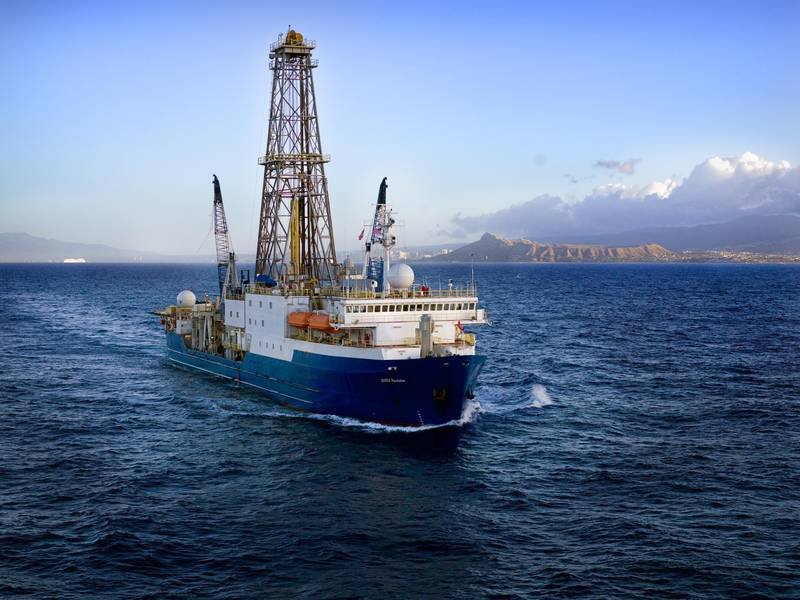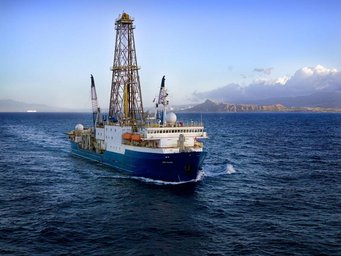The deep Southern Ocean is key to more intense ice ages
An analysis of marine sediments collected at a depth of more than 2 km has provided new insights to one of the mysteries of Earth’s climate history: the mid-Pleistocene climatic transition, which began around one million years ago. During this transition ice ages lengthened and intensified, and their frequency changed from 40,000 years to 100,000 years. The study, which is published this week in the journal Science, shows one of the keys to this phenomenon lies in the deep waters of the ocean surrounding Antarctica, i.e. the Southern Ocean.

An international research team traced the evolution of mixing between deep and surface waters in the Southern Ocean. This process plays a key role in the global climate system, because it brings CO2-rich deep ocean waters to the surface, where the CO2 escapes into the atmosphere. The study shows that mixing was significantly reduced during ice ages at the end of the Mid-Pleistocene Transition, about 600,000 years ago. “Our data explains how reduced mixing prevented CO2 release by the ocean, which in turn reduced the greenhouse effect for thousands of years leading to longer and more intense ice ages. The study provides new clues that help us to better understand one of the most important climatic transition of the past 2 million years of Earth’s climate history”, says Alfredo Martínez-García, scientific group leader at the Max Planck Institute for Chemistry in Mainz who led/conducted the study together Adam Hasenfratz, a PhD student at ETH Zurich, Samuel Jaccard, Professor at the University of Bern, Daniel Sigman, Professor at Princeton University, and Gerald Haug, Director at the Max Planck Institute for Chemistry and Professor at ETH Zurich.
Sediment core enables reconstruction of ocean mixing
The historical reconstruction of the ocean mixing was done using a sediment core 169 meters long, taken from beneath the ocean floor at a depth of 2800 meters, some 2500 kilometers south of the coast of South Africa. The core was retrieved during the late 1990s as part of the International Ocean Drilling Project (IODP).
During his PhD at ETH, Adam Hasenfratz isolated and analysed shells from foraminifera, protozoa with a calcite skeleton. The chemical composition of the shells depends on the marine conditions during the shells’ formation, in particular salinity and water temperature. Hasenfratz focused on one species that lives on the ocean floor (Melonis pompilioides) and one that lives at the ocean surface (Neogloboquadrina pachyderma). That enabled him to obtain information on the temperature and salinity of both deep and surface waters over a period of more than a million years. The ratio of magnesium to calcium present in a foraminifera shell depends on the temperature of the water as the shell is being formed. The salinity of the water was estimated based on the ratio of two isotopes of oxygen (16Oand 18O) present in the calcite (CaCO3) shell, which reflects both the temperature and salinity of the water. The analysis shows that the surface waters cooled over the course of the last million years, especially during ice ages. This reduced the temperature difference between the surface and the cold, deep waters, which in principle should have intensified mixing. But this trend was reversed by the marked decrease in salinity of the surface waters, which became less dense and thus less susceptible to mixing with the deeper layers. The study shows that mixing of the waters diminished significantly at the end of the mid-Pleistocene climatic transition, which allowed the deep waters to sequester CO2 for a longer period of time, potentially explaining the change from 40,000 years to 100,000 years in the periodicity of ice ages.
The study was carried out in collaboration by researchers of the Max Planck Institute for Chemistry in Mainz (Germany), ETH Zurich (Switzerland), University of Bern (Switzerland), Princeton University (United States), the University of Cambridge (United Kingdom), the University of Bergen (Norway) and the British Antarctic Survey (United Kingdom).
(adapted from SNF, AMG, SB)
